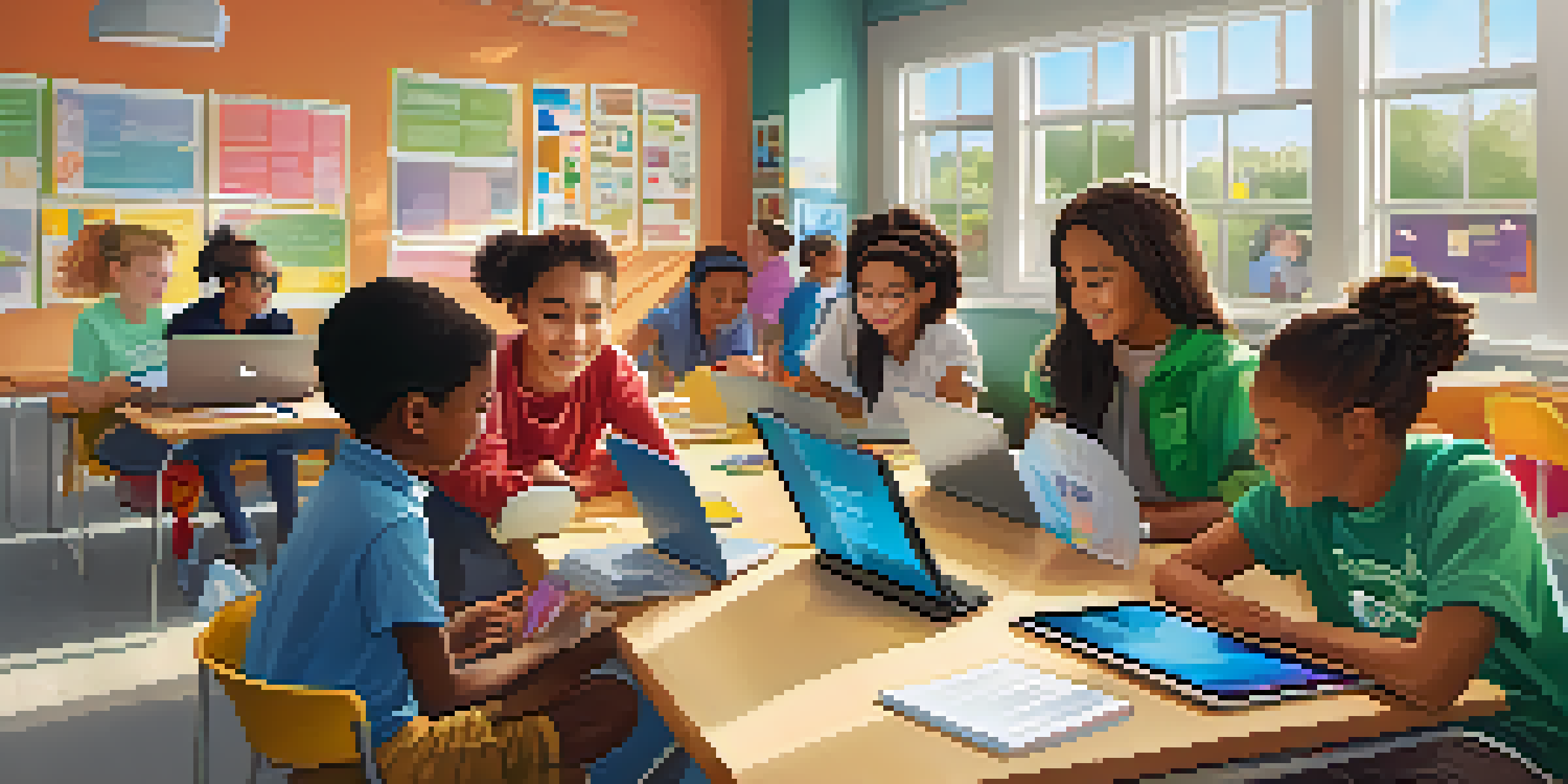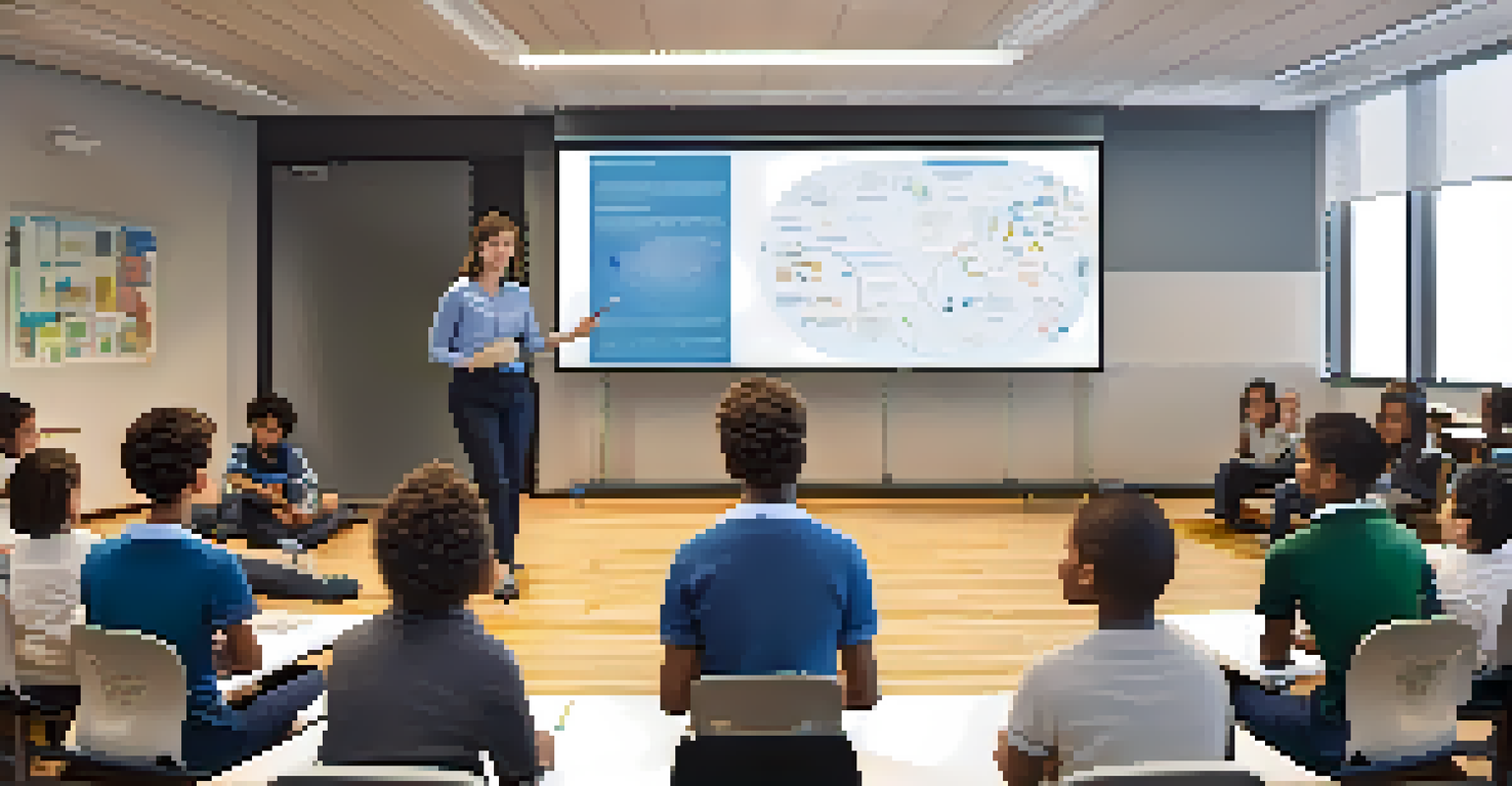Enhancing Accessibility with Collaborative Educational Tools

Understanding Accessibility in Education
Accessibility in education means ensuring that all students, regardless of their abilities, can participate fully in learning activities. This includes providing equal access to resources and opportunities for everyone, including those with disabilities. By focusing on accessibility, educational institutions can create inclusive environments that foster diverse learning experiences.
Inclusion is not a matter of political correctness. It is the key to growth.
Imagine a classroom where every student feels empowered to contribute. This is achievable when educators prioritize accessibility, making adjustments and offering support tailored to individual needs. It’s not just about physical access; it’s also about creating materials and experiences that resonate with all learners.
Moreover, as we embrace technology, the definition of accessibility expands. Digital tools can help bridge gaps, providing alternative ways for students to engage with content and collaborate with peers. This evolution highlights the importance of integrating collaborative educational tools to enhance accessibility in modern learning environments.
The Role of Collaborative Tools in Education
Collaborative tools, such as Google Docs or Microsoft Teams, are designed to promote teamwork and communication among students. These platforms allow learners to work together in real-time, regardless of their physical location. As a result, students can contribute equally, share resources, and support one another, creating a more inclusive learning atmosphere.

Imagine group projects where every voice matters. With collaborative tools, students can easily provide feedback, brainstorm ideas, and engage in discussions, which fosters a sense of belonging. This inclusivity is particularly vital for students who may struggle with traditional forms of participation, allowing them to shine in a supportive environment.
Accessibility is Key in Education
Ensuring all students can fully participate in learning activities is crucial for creating inclusive educational environments.
Additionally, these tools often come equipped with features that enhance accessibility, such as text-to-speech options and customizable interfaces. Such functionalities ensure that all students can navigate the platform comfortably, making learning more engaging and less intimidating. Ultimately, collaborative tools can revolutionize how we approach education by emphasizing teamwork and inclusivity.
Benefits of Using Collaborative Tools
The benefits of using collaborative tools in education extend far beyond mere convenience. They encourage students to take an active role in their learning while developing essential skills, such as communication, problem-solving, and critical thinking. These skills are crucial for success in both academic and professional settings, making collaboration a powerful aspect of modern education.
Technology is best when it brings people together.
Furthermore, collaborative tools can help break down social barriers among students. By fostering connections through shared projects, learners can develop friendships and support networks that enhance their educational experience. This sense of community is invaluable, especially for students who may feel isolated or marginalized.
Moreover, these tools enable personalized learning experiences. Educators can tailor activities and assignments to meet diverse student needs while still promoting collaboration. This balance ensures that every learner can contribute meaningfully while receiving the support necessary to thrive.
Challenges in Implementing Collaborative Tools
While collaborative tools offer numerous advantages, implementing them in educational settings can pose challenges. Not all students have equal access to technology, which can hinder participation and collaboration. Educators must be mindful of these disparities to ensure that all students can engage with the tools effectively.
Additionally, some students may struggle with using new technology or adapting to online collaboration. This learning curve can be daunting, especially for those who are accustomed to traditional classroom settings. Educators should provide guidance and resources to help students navigate these tools comfortably.
Collaborative Tools Enhance Learning
Tools like Google Docs and Microsoft Teams foster teamwork and communication, allowing every student to contribute meaningfully.
Lastly, fostering a culture of collaboration requires time and patience. Teachers must encourage students to collaborate and communicate effectively, which may not come naturally to everyone. By creating a supportive environment, educators can help students build their collaborative skills and confidence over time.
Best Practices for Using Collaborative Tools
To maximize the benefits of collaborative tools, educators should follow best practices that promote effective use. First, it’s essential to set clear expectations and guidelines for collaboration. This ensures that all students understand their roles and responsibilities within group projects, leading to more productive outcomes.
Moreover, providing training and resources for students is crucial. Educators should offer workshops or tutorials on how to use specific tools effectively. By equipping students with the necessary skills, they will feel more confident in their ability to navigate these platforms and contribute meaningfully to their teams.
Lastly, incorporating regular feedback sessions can enhance the collaborative experience. Encouraging students to reflect on their teamwork and communication can foster continuous improvement. This practice not only helps students develop essential skills but also creates an environment where they feel valued and heard.
Real-Life Success Stories
To illustrate the impact of collaborative educational tools, consider a high school that implemented Google Classroom for group assignments. Students who previously struggled to engage in traditional settings found their voices through this platform, leading to increased participation and better academic performance. This transformation highlights how technology can empower students and enhance their learning experience.
Another example is a university that adopted collaborative tools for remote learning during the pandemic. By utilizing platforms like Zoom and Slack, students were able to connect with peers and professors seamlessly. This approach not only maintained academic continuity but also fostered a sense of community, proving that collaboration can thrive even in challenging circumstances.
Challenges in Tech Adoption Exist
While beneficial, implementing collaborative tools can be challenging due to disparities in technology access and varying comfort levels with new tools.
These stories exemplify the potential of collaborative tools to enhance accessibility and inclusivity in education. When students feel supported and connected, they are more likely to succeed academically and socially. Such successes encourage institutions to continue exploring innovative tools that can further enhance the learning experience.
Future of Collaborative Tools in Education
As technology continues to evolve, the future of collaborative tools in education looks promising. Innovations such as virtual reality (VR) and artificial intelligence (AI) are already making waves, offering more immersive and personalized learning experiences. These advancements hold the potential to further enhance accessibility, allowing students to engage with content in entirely new ways.
Moreover, the emphasis on lifelong learning means educators must stay current with emerging tools and trends. By continuously adapting and integrating new technologies, institutions can create dynamic learning environments that cater to diverse student needs. This flexibility will be key to fostering inclusivity in education moving forward.

Ultimately, the future of collaborative tools is about creating equitable learning opportunities for all students. By leveraging technology to enhance accessibility, we can build a more inclusive educational landscape, empowering every learner to reach their full potential.